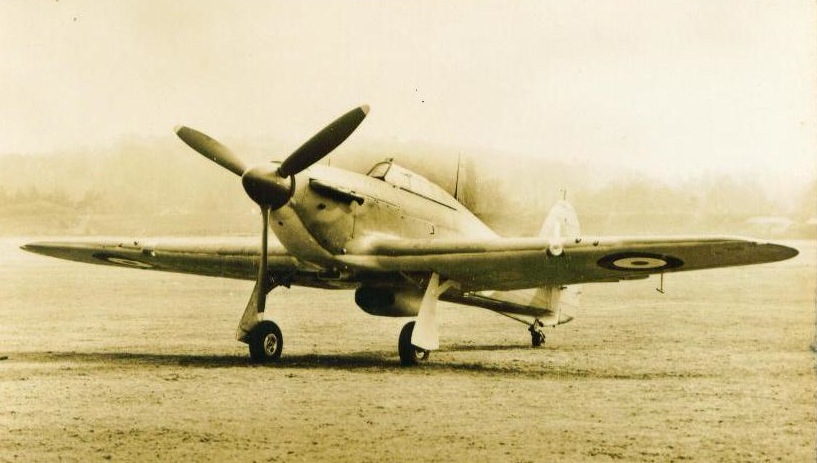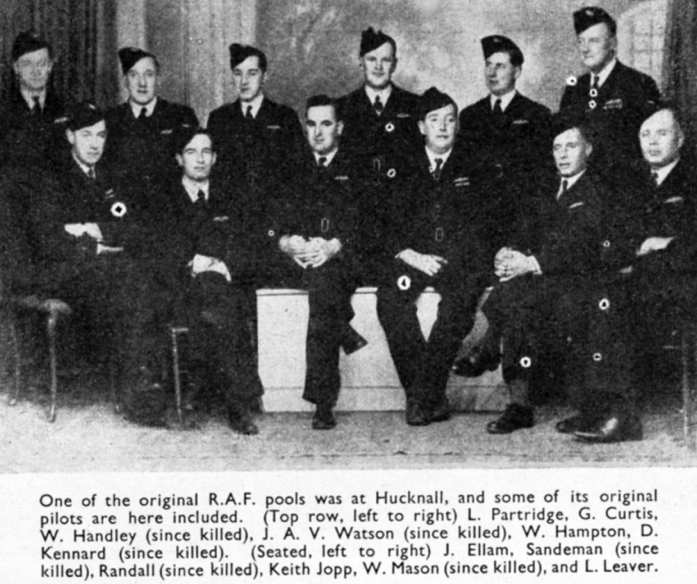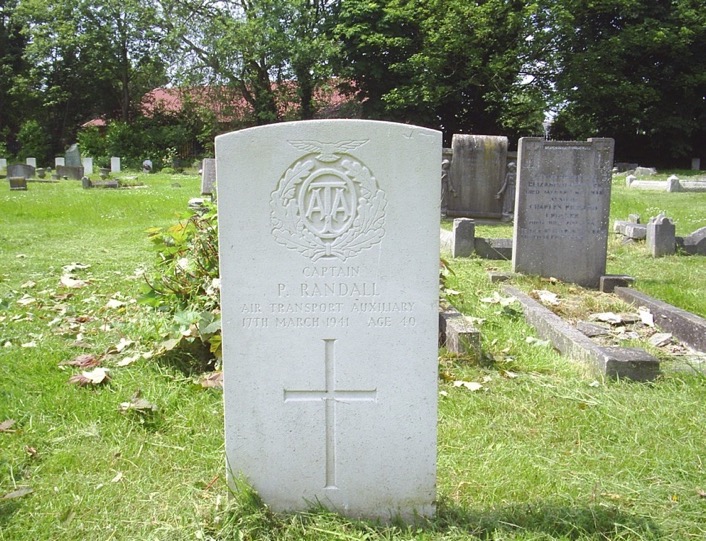Date: 17th March, 1941.
Unit: A.T.A. (Air Transport Auxiliary.)
Type: Hawker Hurricane I.
Serial: Z7010.
Coded: None (New aircraft)
Location: Holy Green, near Princes Risborough, Bucks.
Pilot: Captain Percy Randall A.T.A. Age 40. Killed.
REASON FOR LOSS:
Took-off from Luton at 1315 hrs on a ferry flight to White Waltham, crashed at Holly Green near Princes Risborough 1330 hrs.

Hawker Hurricane I
The following report on the accident made by The Accidents Investigation Branch, after their visit to the crash site, two days after the crash.
Accident Report No. W-986.
Hurricane I Z7010.
Engine: Merlin III 19035/144455.
Unit: Ex custody R.A.F. Henlow.
1.Notification.
By signal from R.A.F. Station, Halton, received 18th March at 0900 hrs. The scene of the accident was first visited on 19th March.
2.Facts Established.
The facts which have been determined by the investigation, or which the available evidence is considered to establish, are as follows:-
The log books were in the aeroplane and were lost in the accident. Form 700 and the remnants of papers salvaged showed that the airframe was Canadian built, had flown 1hr. 25 min. and that the engine had run 138 hrs.
The pilot was a civilian, 40 years of age, employed by the Air Transport Auxiliary. According to his history record card he had a total flying time of 551 hrs, 22 hrs. of which had been in Hurricanes. He had flown 26 different types of aircraft, held an "A" licence and was considered reliable and exceptionally capable.
At the time of the accident weather conditions in the locality were bad for flying. The 1300 hr. report from Benson was "Slight haze, visibility 2000 - 4000 yards, clouds 10/10ths at 500 feet", and from Bicester "Rain and fog, visibility 500 - 1000 yards, sky obscured". The wind was E.N.E. about 5 m.p.h.
On the evening before the accident the pilot collected the aircraft from Henlow for delivery to White Waltham. Here the sound of his engine was heard overhead but fog prevented a landing and he went away. He later rang up to say he had landed at Luton and he spent the night there.
Between 1000 and 1030 hrs on the following morning the pilot was in communication by telephone with the Officer Commanding No, 1 F.P.P.
He was told that the weather at White Waltham was bad and that he should stand by at Luton and bring his aircraft away if the weather cleared.
He was further told that if there was no improvement a car would be sent for him later that day as, although there was no particular urgency about the delivery of the aircraft, he was wanted back for other reasons.
About midday the pilot made a telephone call from the duty pilot's office at Luton. It is not known to whom he spoke but he told the duty officer that the weather was all right at White Waltham and that he proposed to start. He stated that if after all he could not get through to White Waltham he might land at Hullavington. At this time the conditions for flying at Luton were improving but were still bad and had it not been that he carried an authority allowing him to authorise his own flight it is unlikely the pilot would have been permitted to leave. (All A.T.A. pilots, except novices, carry a permit authorising them to decide whether of not they will leave the aerodrome.)
He left the ground at about 1315 hrs and shortly afterwards his aircraft came out of clouds and from over the hills by Princes Risborough. He circled found over the lower ground for seven minutes under the clouds the base of which was about 200 feet. The sound of the engine then ceased and the aircraft dived into the ground.
Examination at the scene of the accident showed that the aircraft had struck the ground at a steep angle and at high speed. The planes and fuselage were telescoped and the engine was buried deeply in soft clay. Examination of the wreckage was difficult, nevertheless nothing was found to suggest the failure in the air of the airframe or its controls. As the engine had been running almost up to the moment of impact and as its recovery was so difficult it was not considered necessary to extricate it. The pilot had been thrown 15 yards ahead of the crash; his parachute had broken away and was lying by his side unopened. His map was found about 800 yards and his peaked Service cap about 280 yards from the scene of the accident. This is suggestive that he had opened the cockpit hood in flight and that his cap had blown off and that he lost his map at the same time. Note: This is not the first time the pilot of a Hurricane has lost his map in this way.
Opinion.
The accident was due to the aircraft striking the ground in an incipient spin after the pilot had stalled it in conditions of bad visibility.
G. Barrett.
Flight Lieutenant.
Inspector.
I agree with this report.
The pilot ought not to have left Luton in the prevailing weather conditions.
Vernon Brown.
Group captain.
Chief Inspector.
Accidents Investigation Branch,
Air Ministry.
Gloucester.
13th May, 1941.
(Hurricane Z7010 was recovered in 1972, please see Archaeology page, 17-3-1941 A.T.A. Hurricane I Z7010 Capt. Randall

We are indebted for the group photo which includes Percy Randall shown above, along with its original caption courtesy of,
(Aeroplane Monthly)copied by them from their archives for us, in memory of Percy, first published in Aeroplane
30th November 1945, page 629.)

Burial Details:
Captain Percy Randall is buried at Maidenhead Cemetery Sec. D. Row L. Grave 6.
(Research by David King Aircrew Remembrance Society April 2009)
(Hurricane Z7010 was recovered in 1972, please see Archaeology page, 17-3-1941 A.T.A. Hurricane I Z7010 Capt. Randall
With thanks to the following: The superb work of the C.W.G.C. "Fighter Command Losses" - Norman Franks.
